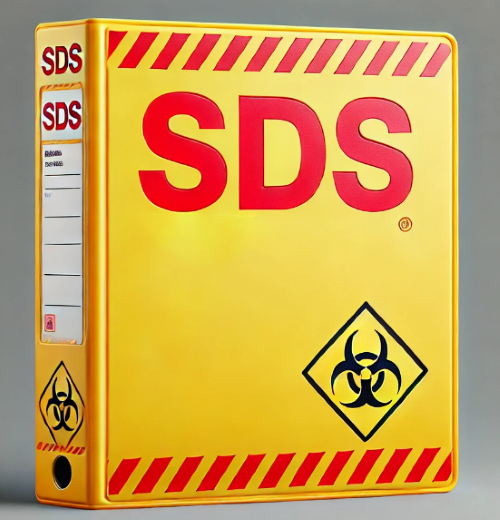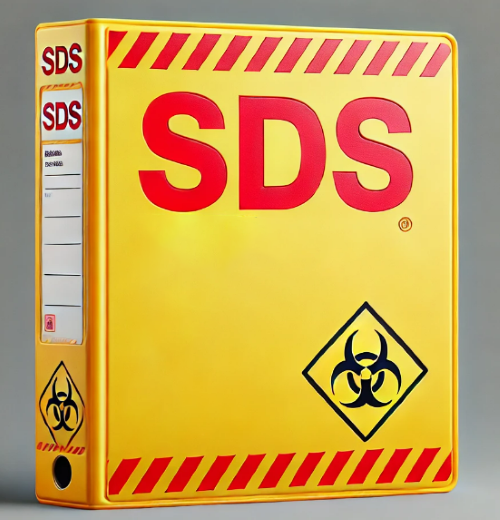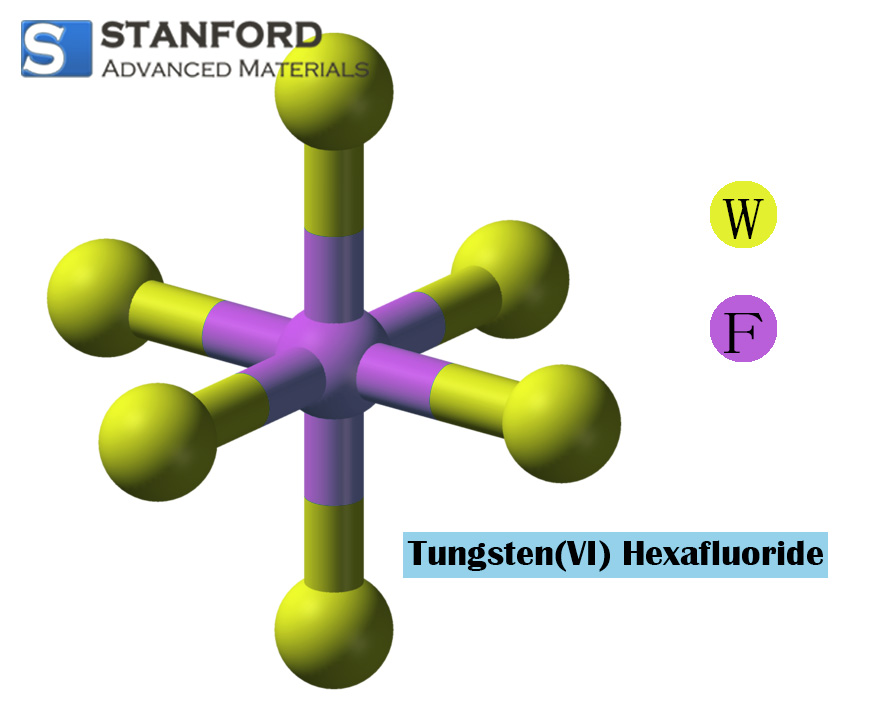SDS Of Tungsten
1. PRODUCT AND COMPANY IDENTIFICATION
1.1 Product Designations
Product name: Wolfram
CAS No.: 7440-33-7
1.2 Identified uses of the substance or mixture and uses advised against
Identified uses: laboratory chemicals, synthesis of substances
1.3 Details of the supplier of the Safety Data Sheet
Manufacturer/Supplier:
Stanford Advanced Materials
23661 Birtcher Dr.
Lake Forest, CA 92630
Telephone: (949) 407-8904
Fax: (949) 812-6690
E-Mail: sales@SAMaterials.com
2. HAZARD IDENTIFICATION
2.1 Classification of the substance or mixture
GHS classification in accordance with 29 CFR 1910 (OSHA HCS)
Flammable solid (Category 1), H228
Causes skin irritation (Category 2), H315
Causes serious eye irritation (Category 2A), H319
The full text of the H-statements mentioned in this section can be found in Section 16.
2.2 GHS label elements, including safety phrases
Pictogram
Signal word: Danger
Hazard statement(s)
H228 Flammable solid.
H315 Causes skin irritation.
H319 Causes serious eye irritation.
Precautionary statement(s)
P210 Keep away from heat/sparks/open flames/hot surfaces. No smoking.
P240 Ground container and receiving equipment.
P241 Use explosion-proof electrical/ventilating/lighting/examination equipment.
P264 Wash thoroughly with soap and water after handling.
P280 Wear protective gloves/eye protection/face protection.
P302 + P352 IF ON SKIN: Wash with plenty of water and soap.
P305 + P351 + P338 IF IN EYES: Rinse cautiously with water for several minutes. Remove contact lenses if present and easy to do, then continue rinsing.
P332 + P313 If skin irritation occurs: Get medical advice/attention.
P337 + P313 If eye irritation persists: Get medical advice/attention.
P362 Remove/don contaminated clothing and wash before reuse.
P370 + P378 In case of fire: Use dry sand, dry chemical or alcohol-resistant foam to extinguish.
2.3 Hazards not otherwise classified (HNOC) or hazards not covered by GHS – none
3. COMPOSITION/INGREDIENT INFORMATION
3.1 Ingredients
Formula: W
Molecular weight: 183.84 g/mol
CAS No.: 7440-33-7
EC No.: 231-143-9
Hazardous components
Component: Wolfram
Classification: Flammable solid 1; Self-heating 2;
H228, H252
Concentration: <= 100
4. FIRST AID MEASURES
4.1 Description of First Aid Measures
General advice
Seek medical attention. Show this Safety Data Sheet to the attending doctor and remove the person from the hazard area.
If inhaled
Move the person to fresh air. If breathing ceases, perform artificial respiration. Obtain medical advice.
If on skin
Wash with soap and plenty of water. Obtain medical advice.
If in eyes
Rinse cautiously with plenty of water for at least 15 minutes and obtain medical advice.
If swallowed
Do not induce vomiting. Never give anything by mouth to an unconscious person. Rinse mouth with water. Seek medical attention.
4.2 Most important acute and delayed symptoms and effects
The most significant known symptoms and effects are specified in the labelling (see Section 2.2) and/or in Section 11.
4.3 Advice for immediate medical attention or special treatment
No data available.
5. FIRE FIGHTING MEASURES
5.1 Suitable extinguishing media
Use spray water, alcohol-resistant foam, dry chemical or carbon dioxide.
5.2 Specific hazards arising from the substance or mixture
No data available.
5.3 Firefighting instructions
When fighting a fire, wear self-contained breathing apparatus if required.
5.4 Additional information
Cool unopened containers with a water spray.
6. ACCIDENTAL RELEASE MEASURES
6.1 Personal precautions, protective equipment and emergency procedures
Use personal protective equipment. Avoid dust formation. Do not breathe in vapour, mist or gas. Ensure adequate ventilation. Eliminate all ignition sources. Evacuate personnel to safe areas. Consequently, avoid breathing dust.
6.2 Environmental precautions
Prevent further spillage or leakage if it can be done safely. Do not allow the product to enter the sewer system.
6.3 Methods and materials for containment and cleaning
Sweep up or shovelling. Contain and then collect the spilt product using an earthed vacuum cleaner or by wet brushing. Place waste in a suitable container for disposal in accordance with local regulations (see Section 13). Store in a closed container for disposal. Consequently, contain the spilt material and collect it with an electrically safe vacuum cleaner.
7. HANDLING AND STORAGE
7.1 Precautions for safe handling
Avoid contact with skin and eyes. Prevent dust and aerosol formation; during further processing of solids, combustible dust may be produced. The possibility of combustible dust formation must be considered prior to further processing.
Ensure suitable extraction at locations where dust is present. Keep away from ignition sources – No smoking. Consequently, implement measures to avoid electrostatic charge accumulation.
7.2 Conditions for safe storage, including any incompatibilities
Store the container tightly closed in a dry and well-ventilated area.
Store in a dry place.
Storage class (TRGS 510): Flammable solid hazardous substance
7.3 Specific end uses
No specific end uses are foreseen other than those indicated in Section 1.2.
8. EXPOSURE CONTROLS/PERSONAL PROTECTIVE EQUIPMENT
Exposure controls
Use appropriate technical measures following good laboratory practice and safety procedure. Consequently, wash hands before breaks and at the end of the working day.
Personal protective equipment
Eye/face protection
Wear safety goggles with side protection according to EN166. Use devices that have been approved in accordance with applicable state standards such as NIOSH (USA) or EN 166 (EU).
Skin protection
Use gloves when handling. The gloves must be checked prior to use. When removing gloves, ensure that the outer surface is not touched, thereby preventing skin contact with the product. Dispose of contaminated gloves in accordance with applicable laws and good laboratory practice. Wash and dry hands thereafter.
Body protection
Wear impervious clothing, flame retardant and antistatic protective clothing; the type of protective equipment must be selected according to the concentration and quantity of the hazardous substance at the workplace.
Respiratory protection
If the risk assessment indicates that a respiratory protective device is necessary, use a full-face particulate respirator of type N100 (US) or type P3 (EN 143) as a supplement to technical controls. If the respirator is the only protective device, use one with an air supply. Consequently, use respiratory protective devices and components approved in accordance with applicable state standards such as NIOSH (USA) or CEN (EU).
Environmental exposure control
Take further measures to prevent leakages or spills if it can be done safely. Do not allow the product to enter the sewer system.
9. PHYSICAL AND CHEMICAL PROPERTIES
9.1 Information on basic physical and chemical properties
a) Appearance
Form: Powder
Colour: Grey
b) pH
No data available
c) Melting/freezing point
Melting point/range: 3410 °C (6170 °F) – lit.
d) Boiling point and boiling range
Boiling point: 5660 °C (10220 °F) – lit.
e) Relative density
19.3 g/cm³ at 25 °C (77 °F)
10. STABILITY AND REACTIVITY
10.1 Reactivity
No data available
10.2 Chemical stability
Stable under the recommended storage conditions.
10.3 Possibility of hazardous reactions
No data available.
10.4 Conditions to avoid
Heat, flames and sparks.
10.5 Incompatible materials
Strong oxidising agents, halogens.
10.6 Hazardous decomposition products
Hazardous decomposition products may be generated under fire conditions – tungsten oxide
Other decomposition products – No data available
11. TOXICOLOGICAL INFORMATION
11.1 Information on toxicological effects
Acute toxicity
LD50 Oral – Rat – male and female – > 2 000 mg/kg
(OECD Guidelines 401)
LC50 Inhalation – Rat – male and female – 4 h – > 5.4 mg/l
(OECD Guidelines 403)
LD50 Dermal – Rat – male and female – > 2 000 mg/kg
(OECD Guidelines 402)
Skin corrosion/irritation
Skin – Rabbit
Result: No skin irritation – 4 h
(OECD Guidelines 404)
Serious eye damage/eye irritation
Eyes – Rabbit
Result: Slight eye irritation
(OECD Guidelines 405)
Respiratory or skin sensitisation
Maximisation test – Guinea pig
Result: Does not cause skin sensitisation
(OECD Guidelines 406)
Germ cell mutagenicity
No data available
Carcinogenicity
IARC: No component of this product present at a concentration of 0.1% or more is classified by IARC as a possible, probable or confirmed human carcinogen.
NTP: No component of this product present at a concentration of 0.1% or more is identified by NTP as a known or anticipated human carcinogen.
OSHA: No component of this product present at a concentration of 0.1% or more is classified by OSHA as carcinogenic or potentially carcinogenic.
Reproductive toxicity
No data available
Reproductive toxicity – Rat – Oral
Effects on fertility: Mortality following implantation (e.g. dead and/or resorbed implants per total number of implants).
Specific developmental effects: Musculoskeletal system.
12. ECOLOGICAL INFORMATION
12.1 Toxicity
No data available
12.2 Persistence and degradability
No data available
12.3 Bioaccumulation potential
No data available
12.4 Mobility in soil
No data available
12.5 Results of PBT and vPvB assessment
PBT/vPvB assessment not available as a substance safety assessment was not required/undertaken
12.6 Other adverse effects
No data available
13. DISPOSAL CONSIDERATIONS
13.1 Waste treatment methods
Product
Dispose of by incineration in a chemical waste incinerator with afterburner and scrubber. Take particular care when igniting as the material is easily combustible. Offer surplus and non-recyclable solutions to a certified disposal company. Consequently, contact a professional disposal service authorised for this material.
Contaminated packaging
Dispose of in the same manner as unused product.
14. TRANSPORT INFORMATION
DOT (US)
UN Number: 3089 Class: 4.1 Packing Group: II
Proper shipping name: Metal powder, flammable, n.a.g.
Reportable Quantity (RQ):
Inhalation hazard: No
IMDG
UN Number: 3089 Class: 4.1 Packing Group: II EMS No.: F-G, S-G
Proper shipping name: METAL POWDER, FLAMMABLE, N.A.G.
IATA
UN Number: 3089 Class: 4.1 Packing Group: II
Proper shipping name: Metal powder, flammable, n.a.g.
15. REGULATORY INFORMATION
SARA 302 Components
None of the chemicals in this material are subject to the SARA Title III Section 302 reporting requirements.
SARA 313 Components
This material does not contain any chemical components with known CAS Numbers exceeding the SARA Title III Section 313 de minimis thresholds for reporting.
SARA 311/312 Hazards
Fire hazard
Massachusetts Right To Know Components
Wolfram
CAS No.
7440-33-7
Revision date: 01/04/1994
Pennsylvania Right To Know Components
Wolfram
CAS No.
7440-33-7
Revision date: 01/04/1994
New Jersey Right To Know Components
Wolfram
CAS No.
7440-33-7
Revision date: 01/04/1994
California Prop. 65 Components
This product does not contain chemicals known to the State of California to cause cancer, birth defects or other reproductive harm.
16. OTHER INFORMATION
Full text of the H-statements mentioned in Sections 2 and 3.
Flammable solid
H228 Flammable solid.
H252 May self-heat in large quantities; may ignite.
H315 Causes skin irritation.
H319 Causes serious eye irritation.
HMIS Rating
Health hazard: 2
Chronic health hazard:
Flammability: 3
Physical hazard: 3
NFPA Rating
Health hazard: 2
Fire hazard: 3
Reactivity hazard: 3
Additional information
This Safety Data Sheet is provided solely for your information, consideration and investigation. Stanford Advanced Materials does not provide any guarantee, express or implied, and accepts no responsibility for the accuracy or completeness of the data contained herein.

 Bars
Bars
 Beads & Spheres
Beads & Spheres
 Bolts & Nuts
Bolts & Nuts
 Crucibles
Crucibles
 Discs
Discs
 Fibers & Fabrics
Fibers & Fabrics
 Films
Films
 Flake
Flake
 Foams
Foams
 Foil
Foil
 Granules
Granules
 Honeycombs
Honeycombs
 Ink
Ink
 Laminate
Laminate
 Lumps
Lumps
 Meshes
Meshes
 Metallised Film
Metallised Film
 Plate
Plate
 Powders
Powders
 Rod
Rod
 Sheets
Sheets
 Single Crystals
Single Crystals
 Sputtering Target
Sputtering Target
 Tubes
Tubes
 Washer
Washer
 Wires
Wires
 Converters & Calculators
Converters & Calculators
 Write for Us
Write for Us
 Chin Trento
Chin Trento



